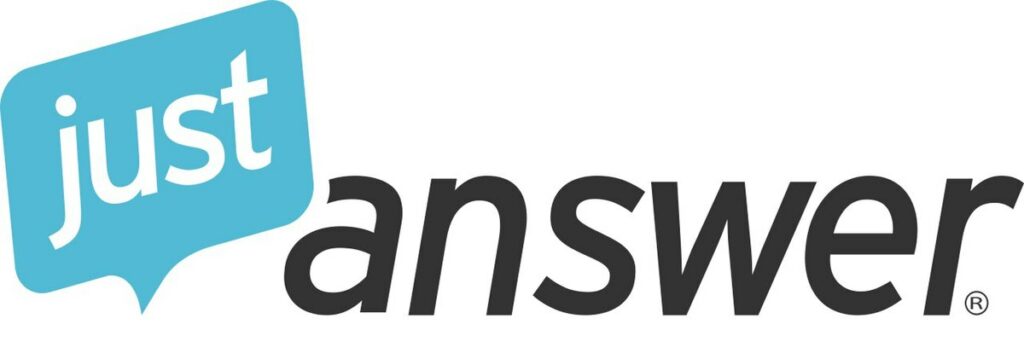When you borrow someone else’s car and get into an accident, it’s important to understand who is responsible for the damages. In most cases, the owner’s insurance policy will cover the costs. Liability coverage is typically the primary insurance that comes into play, and it usually pays for repairs to the other vehicle involved in the accident. However, the specific details may vary depending on the insurance policies and the circumstances of the accident.
Key Takeaways:
- When borrowing a car, the owner’s insurance policy usually covers the damages in the event of an accident.
- Liability coverage is the primary insurance that comes into play for borrowed car accidents.
- Optional coverages like collision and comprehensive can provide additional protection for the borrowed vehicle.
- The legal responsibility for a borrowed car accident may rest with the owner of the vehicle.
- Non-permissive use of a borrowed car can complicate insurance coverage.
Understanding Liability Coverage for Borrowed Cars
Liability coverage is a crucial aspect of car insurance when it comes to borrowed vehicles. If you cause an accident while driving a car that isn’t yours, liability coverage should cover the damages to the other driver’s vehicle. This coverage is required in most states and is designed to protect the owner of the vehicle from being financially responsible for the damages caused by someone else. It’s important to check the policy and contact the insurance agent to ensure that you are covered in these situations.
When determining fault in car accidents involving borrowed cars, liability coverage comes into play. It provides protection for the owner of the vehicle by covering the damages caused to another driver’s vehicle. In most cases, the owner’s insurance policy acts as the primary coverage, ensuring that the damages are paid for, regardless of who is at fault.
However, it’s essential to review your insurance policy and understand the specific coverage for borrowed cars. Different insurance companies may have varying policies and limits, so it’s crucial to be aware of any limitations or exclusions. Contacting your insurance agent can help ensure that you have the necessary liability coverage and provide peace of mind when lending your vehicle.
Understanding Liability Coverage for Borrowed Cars
Liability coverage is a crucial aspect of car insurance when it comes to borrowed vehicles. If you cause an accident while driving a car that isn’t yours, liability coverage should cover the damages to the other driver’s vehicle. This coverage is required in most states and is designed to protect the owner of the vehicle from being financially responsible for the damages caused by someone else. It’s important to check the policy and contact the insurance agent to ensure that you are covered in these situations.
When determining fault in car accidents involving borrowed cars, liability coverage comes into play. It provides protection for the owner of the vehicle by covering the damages caused to another driver’s vehicle. In most cases, the owner’s insurance policy acts as the primary coverage, ensuring that the damages are paid for, regardless of who is at fault.
However, it’s essential to review your insurance policy and understand the specific coverage for borrowed cars. Different insurance companies may have varying policies and limits, so it’s crucial to be aware of any limitations or exclusions. Contacting your insurance agent can help ensure that you have the necessary liability coverage and provide peace of mind when lending your vehicle.
Optional Insurance Coverages for Borrowed Cars
When it comes to borrowing someone else’s car, it’s important to consider the insurance coverages available to protect yourself and the borrowed vehicle. While liability coverage is typically the primary insurance that comes into play in borrowed car accidents, there are optional coverages that you can consider to provide additional protection.
Two optional coverages to consider are collision and comprehensive coverages. Collision coverage helps cover the repair costs for damages to the borrowed car, regardless of who is at fault. This coverage can be beneficial if you are involved in an accident and the borrowed vehicle sustains significant damage.
Comprehensive coverage, on the other hand, protects against non-collision-related damages, such as theft, vandalism, or weather-related incidents. Adding this coverage to your policy can provide peace of mind when borrowing a vehicle, knowing that you are protected from a wider range of potential risks.
| Optional Coverages | Covered Risks |
|---|---|
| Collision Coverage | Damages from accidents, regardless of fault |
| Comprehensive Coverage | Non-collision damages: theft, vandalism, weather-related incidents, etc. |
It’s important to review your insurance policy or consult with your insurance provider to understand the optional coverages available for borrowed vehicles. They can help you determine the best insurance coverage for your needs and ensure you are adequately protected in case of an accident or other incident.
Legal Responsibility in Borrowed Car Accidents
When it comes to borrowed car accidents, determining legal responsibility is a crucial factor. While the at-fault party is typically responsible for the damages and injuries resulting from the accident, there are instances where the legal responsibility may fall on the owner of the borrowed car. This concept is known as the dangerous instrumentality doctrine, which states that vehicle owners are responsible for any damages or injuries caused by someone they have granted custody or operation of their vehicle.
Under the dangerous instrumentality doctrine, if someone borrows your car and causes an accident, you may be held liable for the damages. This means that even if you were not driving the car at the time of the accident, you could still be legally responsible for the consequences. It’s important to be aware of this legal principle and take it into consideration when lending your vehicle to someone.
Liability for Borrowed Car Accidents
In borrowed car accidents, liability for the damages generally falls on the at-fault party. However, it’s crucial to understand that liability can extend to the owner of the borrowed car under certain circumstances. The specific details may vary depending on the laws of the state and the insurance policies in place.
It’s essential to review your insurance policy and consult with your insurance provider to understand the liability coverage in borrowed car accidents. By having a clear understanding of your legal responsibilities and insurance coverage, you can protect yourself and make informed decisions when lending your vehicle.
| Scenario | Liability |
|---|---|
| The borrower is at fault | The borrower is primarily liable |
| The owner is at fault | The owner is primarily liable under the dangerous instrumentality doctrine |
| The owner provided permission for non-permissive use | The owner may share liability |
Coverage for Non-Permissive Use of Borrowed Cars
When someone borrows your car without your permission, it can lead to complex insurance situations. In such cases, it’s important to understand how coverage works and who is responsible for the damages and injuries resulting from an accident. While your insurance policy may still provide primary coverage, determining if the person had permission to use your car is crucial.
If the borrower did not have permission to use your car, their own insurance policy may come into play as the primary coverage. However, if they don’t have insurance or their coverage doesn’t apply to borrowed vehicles, you may still be held responsible for the damages.
To navigate these situations effectively, it’s essential to review your insurance policy and understand the coverage in place for non-permissive use of borrowed vehicles. Being aware of the terms and conditions can help you make informed decisions and take appropriate action in case of an accident.
Understanding Non-Permissive Use
Non-permissive use refers to situations where someone uses your car without your permission. This can include scenarios where your car is stolen, or a friend or family member takes your car without your knowledge or consent.
In such cases, it’s important to report the incident to the police and your insurance company as soon as possible. Your insurance provider may launch an investigation to determine if the use of your car was indeed non-permissive. They might request police reports or additional documentation to support your claim.
By understanding the coverage for non-permissive use and taking proper action, you can protect yourself from unnecessary liability and ensure that the appropriate insurance policies come into play in case of an accident.
Impact on Insurance Rates
When it comes to borrowed car accidents, the impact on insurance rates can be significant. Insurance companies consider various factors when determining premiums, and an accident involving your vehicle, even if you were not at fault, may result in an increase in your rates at the time of renewal. This is because insurance companies view accidents as an indication of increased risk and may need to adjust your premium accordingly.
It’s important to note that the effect on insurance rates can vary depending on the specific circumstances of the borrowed car accident. If the accident was caused by the person borrowing your car, their insurance rates may also be affected. However, if you were not driving your car at the time of the accident, your insurance rates may still be impacted, as the accident occurred with your vehicle.
In addition to potential rate increases, a borrowed car accident can also have other insurance implications. If the person borrowing your car has been regularly using it without being listed on your insurance policy, it could lead to insurance issues, including potential premium increases or policy cancellation. Therefore, it’s crucial to review your insurance policy regularly and ensure that all drivers who have access to your vehicle are properly listed and covered.
| Impact on Insurance Rates | Insurance Implications |
|---|---|
| Rate Increases | Accidents involving your vehicle, even if you were not at fault, may result in an increase in your insurance rates at the time of renewal. |
| Insurance Policy Issues | If the person borrowing your car is not listed on your insurance policy and regularly uses your vehicle, it could lead to potential premium increases or policy cancellation. |
In summary, a borrowed car accident can have a significant impact on your insurance rates. It’s important to be aware of the potential consequences and take steps to minimize your risk. By ensuring that all drivers who have access to your vehicle are properly listed on your insurance policy and practicing safe lending practices, you can help protect yourself from potential rate increases and insurance policy issues.

Liability and Insurance Variables in Borrowed Car Accidents
When it comes to borrowed car accidents, there are several variables that can affect liability and insurance coverage. These variables play a crucial role in determining who is responsible for the damages and injuries resulting from the accident. Understanding these variables can help ensure that you have the appropriate coverage in place and minimize your financial risk.
One of the key variables is permission for the use of the vehicle. If the person borrowing the car had explicit permission to use it, the owner’s insurance policy is typically the primary coverage. However, if the borrowing was done without permission, the situation becomes more complex. In such cases, the borrower’s own insurance policy may come into play as the primary coverage, or if they lack coverage or it doesn’t apply to borrowed vehicles, the owner may still be held responsible.
Another variable that affects liability and coverage is the borrower’s household status. Some insurance policies may have specific clauses that limit coverage for individuals living in the same household but not listed as drivers on the policy. It’s important to review your policy to understand how it addresses coverage for household members who borrow your car.
“Liability and insurance limits can also impact the coverage available in borrowed car accidents. If the damages exceed the policy limits, the at-fault party may be personally responsible for the remaining costs. It’s crucial to review your policy and consider increasing your liability limits to ensure adequate protection.”
Additionally, who is at fault in the accident can also impact liability. If the borrower is at fault, their insurance coverage would typically be responsible for the damages. However, if the owner of the borrowed car is found to be negligent in entrusting their vehicle to someone who caused an accident, they may also be held liable for the damages.
It’s essential to have a clear understanding of your insurance policy and how these variables can affect your coverage in borrowed car accidents. Reviewing your policy and discussing your specific situation with your insurance provider can help ensure that you have the necessary coverage and minimize your financial risk in case of an accident.
Understanding Car Insurance Coverage in Florida
When it comes to car insurance coverage in Florida, it’s important to understand how the laws and policies may differ from other states. In Florida, car insurance coverage follows the vehicle rather than the driver. This means that if you lend your car to a friend or family member, your car insurance policy is typically the primary coverage that applies in case of an accident. The driver’s insurance acts as secondary coverage in most cases. It’s essential to review your specific insurance policy, consult with your insurance provider, and understand the coverage in place for borrowed vehicles in Florida.
Being aware of the car insurance coverage in Florida is crucial as it helps you make informed decisions when lending your vehicle. It’s important to be selective about who you lend your car to and ensure that the borrower is a responsible and licensed driver. Additionally, having clear communication and providing explicit permission for the use of your vehicle can help minimize potential liability in case of a borrowed car accident. By regularly reviewing and updating your insurance policy to include other drivers living at your address, you can provide added protection and peace of mind.
In summary, Florida’s car insurance coverage follows the vehicle, making it important to understand the specific policies and laws in place. Lending your car to others can come with potential liability, but by exercising caution and taking necessary precautions, you can reduce your risk. Consult with your insurance provider, review your policy, and consider additional coverage options, if necessary, to ensure you have the appropriate coverage in case of a borrowed car accident in Florida.
Table: Comparison of Car Insurance Coverage in Florida and Other States
| Insurance Coverage | Florida | Other States |
|---|---|---|
| Primary Coverage | Follows the Vehicle | Follows the Driver |
| Secondary Coverage | Driver’s Insurance | Vehicle Owner’s Insurance |
| Liability | Owner’s Responsibility | Driver’s Responsibility |
| Optional Coverages | Collision, Comprehensive | Collision, Comprehensive, Uninsured/Underinsured Motorist |
| Legal Responsibility | Owner’s Liability | Driver’s Liability |
Tips for Lending Your Vehicle
When it comes to lending your car, it’s important to take certain precautions to ensure your safety and minimize liability. Here are a few tips that can help:
Firstly, be selective about who you lend your car to. Make sure the borrower is a responsible and licensed driver who you trust with your vehicle. Knowing that they have a good driving record can give you peace of mind.
Clear communication is also key. Provide explicit permission for the use of your vehicle and set some ground rules. Make sure the borrower understands your expectations regarding safe driving practices, including adhering to traffic rules and avoiding distractions.
Regularly reviewing and updating your insurance policy is crucial. Consider adding other drivers living at your address to your policy. This can provide added protection and ensure that coverage extends to borrowed vehicles. Consult your insurance agent to understand the specifics and any additional steps you need to take.
FAQ
What should I do if I borrow someone else’s car and get into an accident?
In most cases, the owner’s insurance policy will cover the damages. Liability coverage is typically the primary insurance that comes into play and usually pays for repairs to the other vehicle involved in the accident.
Does liability coverage apply to borrowed cars?
Yes, liability coverage is a crucial aspect of car insurance when it comes to borrowed vehicles. It should cover the damages to the other driver’s vehicle if you cause an accident while driving a car that isn’t yours.
Are there additional insurance coverages for borrowed cars?
Yes, optional coverages like collision and comprehensive can provide additional protection for the borrowed vehicle by covering repair costs for damages, regardless of fault. Review your insurance policy or consult with your provider to understand the optional coverages available.
Who is responsible for the damages in borrowed car accidents?
The at-fault party is generally responsible for the damages and injuries resulting from the accident. However, the legal responsibility for the accident may rest with the owner of the borrowed car under the dangerous instrumentality doctrine.
What is non-permissive use in borrowed car accidents?
Non-permissive use refers to situations where someone borrows your car without your permission. While your insurance may still provide primary coverage, it’s essential to determine if the person had permission. If they did not, their insurance may come into play as the primary coverage.
Can a borrowed car accident affect my insurance rates?
Yes, even if you were not driving your car at the time of the accident, it can still have an impact on your insurance rates. An accident involving your vehicle may result in an increase in your rates at renewal.
What variables affect liability and insurance coverage in borrowed car accidents?
Variables like permission, fault, insurance limits, and the borrower’s coverage can impact liability and coverage. It’s crucial to understand your insurance policy and how these variables can affect your coverage.
How does car insurance coverage work for borrowed cars in Florida?
In Florida, car insurance coverage follows the vehicle rather than the driver. Your car insurance is typically the primary coverage when someone borrows your car, while the driver’s insurance acts as secondary coverage.
How can I minimize my liability when lending my car?
To minimize liability, be selective about who you lend your car to and ensure they are responsible and licensed drivers. Have clear communication, provide explicit permission, and consider updating your insurance policy to include other drivers at your address.
Source Links
- https://www.forbes.com/advisor/car-insurance/friend-crashes-car/
- https://www.nolo.com/legal-encyclopedia/if-i-borrow-a-car-and-damage-another-vehicle-in-an-accident-am-i-covered-under-the-owner-s-insurance-policy.html
- https://www.lowmanlawfirm.com/blog/bid/100316/a-friend-borrowed-my-car-involved-in-an-auto-accident-am-i-liable










